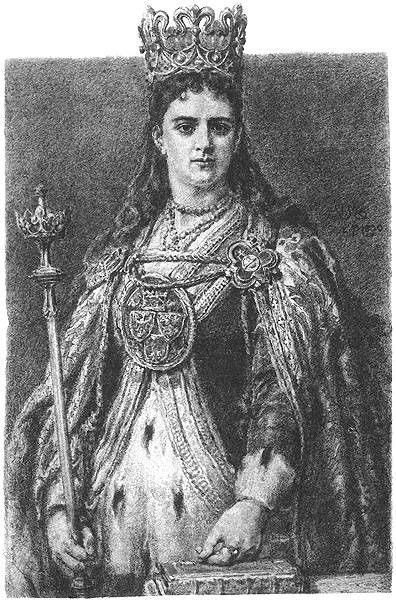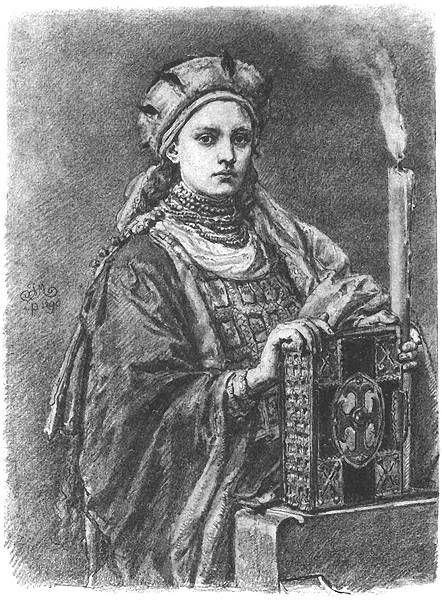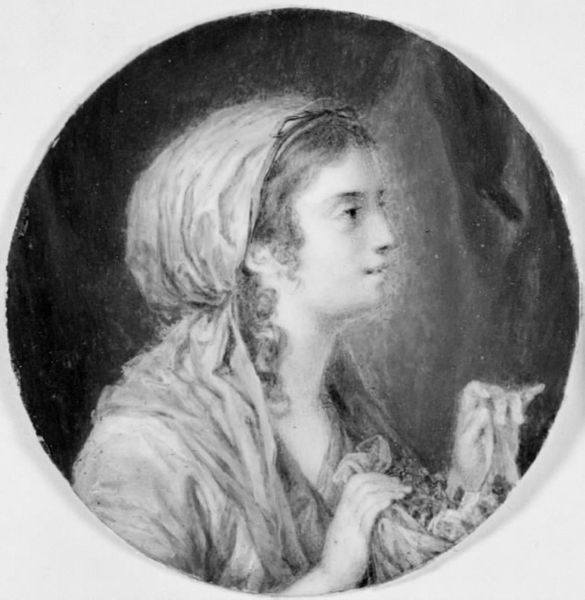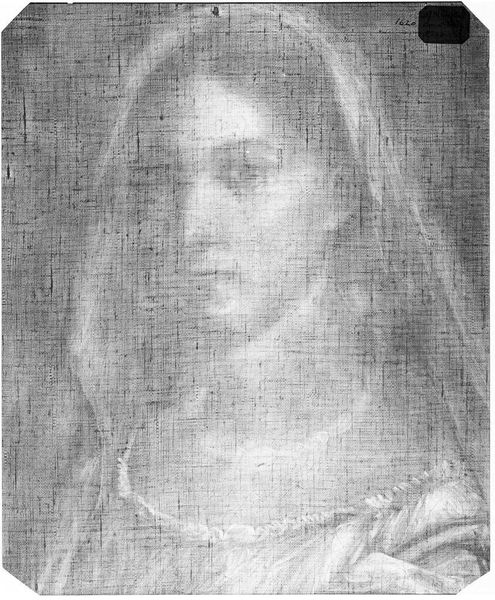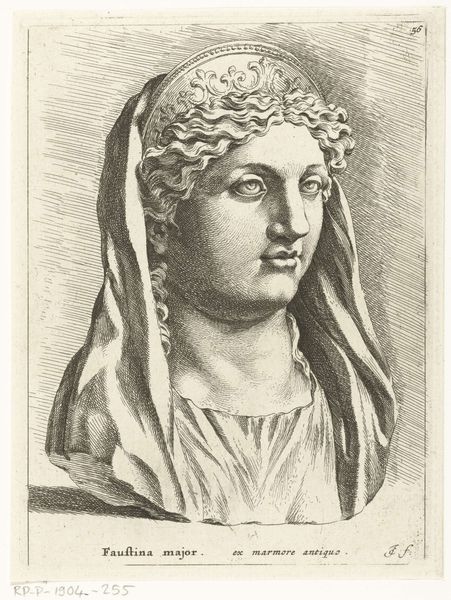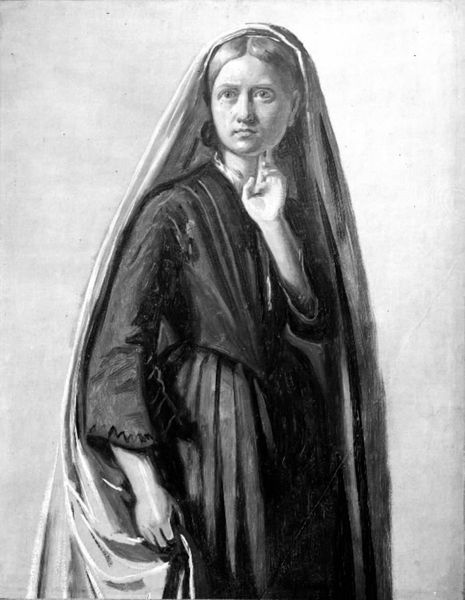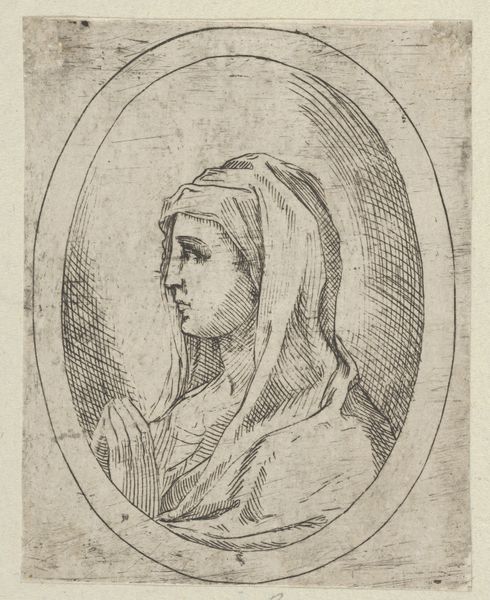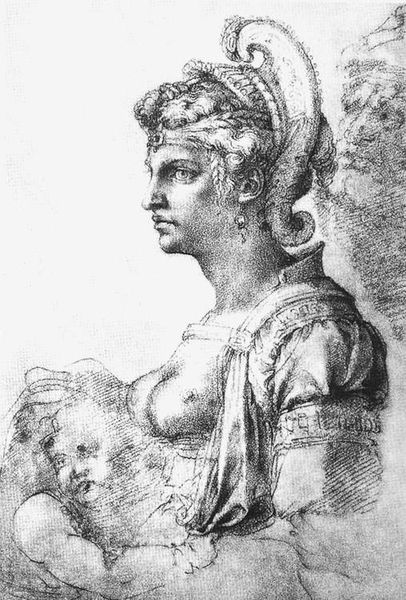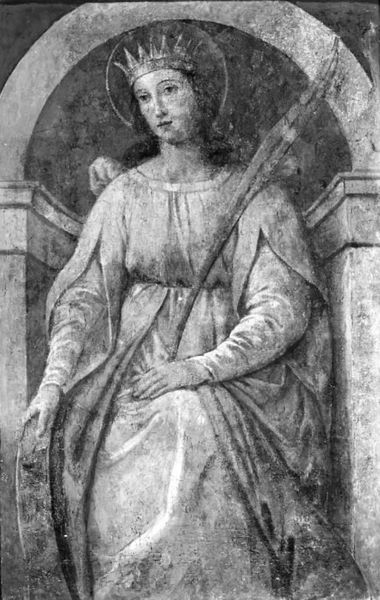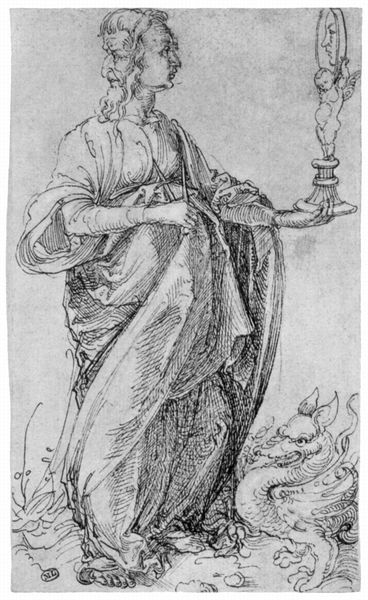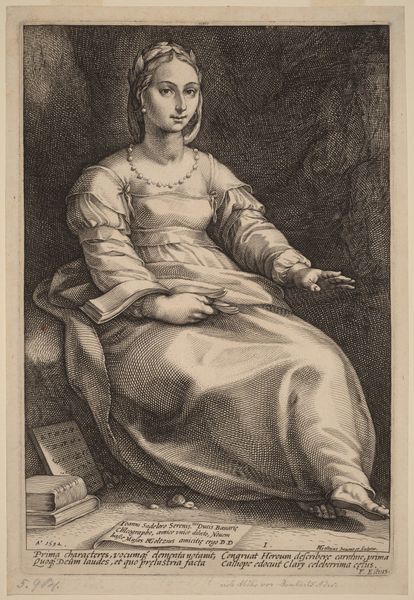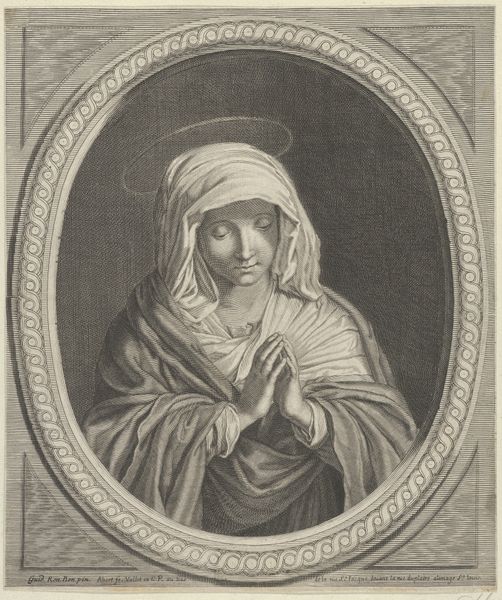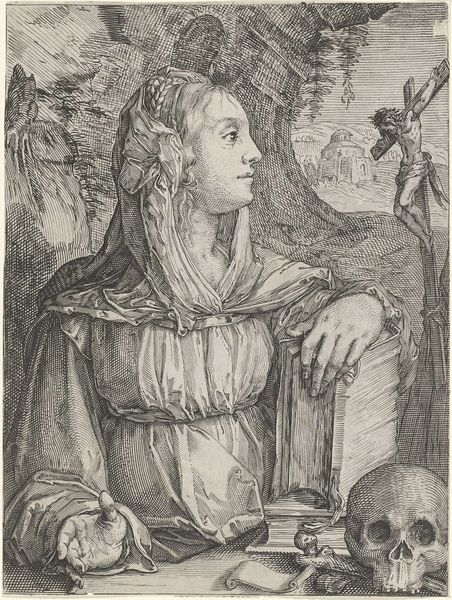
drawing, graphite
#
portrait
#
drawing
#
medieval
#
graphite
Copyright: Public domain
Editor: This is a portrait titled "Richensa of Lotharingia" by Jan Matejko. It appears to be a graphite drawing in a medieval style. There is a sense of stateliness but also a certain severity about her expression. What can you tell me about the composition? Curator: Observe how Matejko deploys a relatively tight crop. This enhances the monumentality of the figure within the pictorial space, compressing her essence. The drawing has some clear diagonals: consider the staff and the draping folds in her garments. The details are sharply rendered; there's strong attention to line and shading. Are you picking up on other significant structural elements? Editor: Well, the large circular brooch draws my eye, creating a focal point that sits geometrically opposed to the crown above her head. How do those two elements interplay formally, for you? Curator: Precisely. The crown is delicate, intricate; its upward reaching form speaks to ethereal power, a form almost negated by the grounded, weighty aspect of the brooch, that contains the visual density of this image. These elements balance to produce a satisfying tension. Do you also notice the use of light and shadow? Editor: Yes! The chiaroscuro is strong, particularly on her face and clothing. It adds depth and volume, preventing the portrait from feeling flat, but it does emphasize the texture of everything and the way they are draped. What else is important in terms of brushwork? Curator: Notice the controlled handling of graphite that constructs complex tonal graduations. These tonal structures create both a sense of volume but also pattern upon the surface of garments which speak to material richness. The consistent cross-hatching adds an amazing amount of structure, doesn't it? Editor: Absolutely! Considering line, texture, form, and shadow independently really opened my eyes. I will need to apply this method more often. Curator: It allows a direct conversation with the work and you see the means through which art attains expression.
Comments
No comments
Be the first to comment and join the conversation on the ultimate creative platform.
